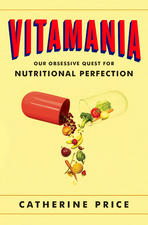Congress again micromanages nutrition standards
Congress, in its infinite wisdom, is again using the appropriations process to micromanage nutrition standards for school meals and the WIC program, against the advice of the Institute of Medicine and other health experts.
The new appropriations bill includes several provisions relevant to issues I discuss frequently here. By all reports, this is the best that can be expected, given the makeup of this Congress.
- Section 751 grants exemptions to states from the whole grain requirements for school meals “Provided, That school food authorities demonstrate hardship…in procuring specific whole grain products which are acceptable to the students and compliant with the whole grain-rich requirements (my translation: forget whole grains and recommendations by health experts. They are way too much trouble).
- Section 752 says that no federal funds may be used to pay the salaries of people doing work “that would require a reduction in the quantity of sodium contained in federally reimbursed meals, foods, and snacks sold in schools…until the latest scientific research establishes the reduction is beneficial for children (We know more about the effects of salt on health than do health professionals and expert committees).
- Section 753 says Congress won’t pay the salaries of anybody who tries to “exclude or restrict, he eligibility of any variety of fresh, whole, or cut vegetables (except for vegetables with added sugars, fats, or oils) from being provided under the Special Supplemental Nutrition Program for Women, Infants, and Children (no, you can’t keep white potatoes out of the WIC program).
Chalk these up to effective lobbying by the School Nutrition Association, makers of salty snacks, and the potato lobby.
The good news, such as it is:
- Congress did not roll back most of the USDA’s food standards for school meals.
- It only cut SNAP by $400 million.
- It only cut WIC by $93 million.
These must be considered enormous victories, given the circumstances.
Addition, December 12: The Hagstrom Report quotes USDA Secretary Tom Vilsack:
On the provision to require the availability of white potatoes in the Special Supplemental Nutrition Assistance Program for Women, Infants and Children (WIC), Vilsack said, “With all due respect to the politicians who make the law, I have more confidence in pediatricians and more confidence in medical science than in political science.”






